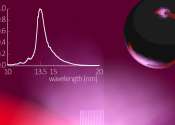Creating higher energy density lithium-ion batteries for renewable energy applications
Lithium-ion batteries (LIBs) that function as high-performance power sources for renewable applications, such as electric vehicles and consumer electronics, require electrodes that deliver high energy density without compromising ...









